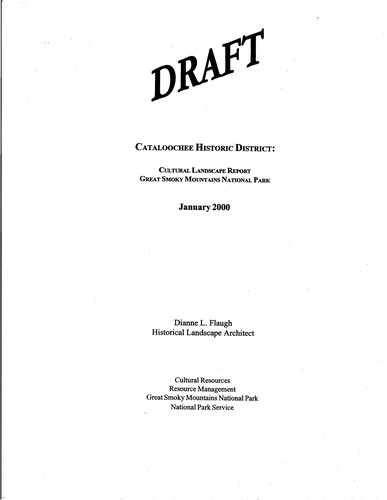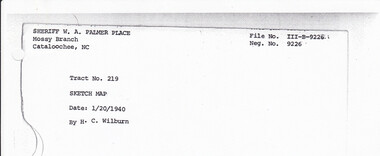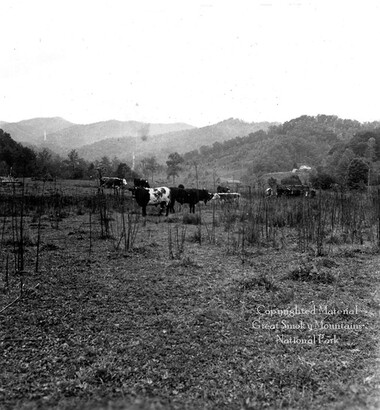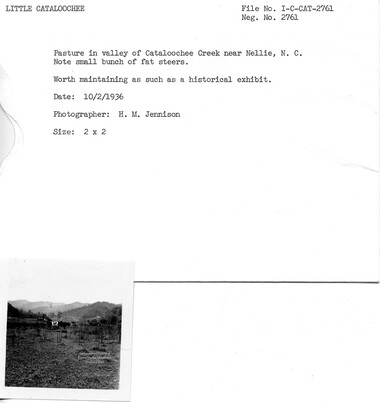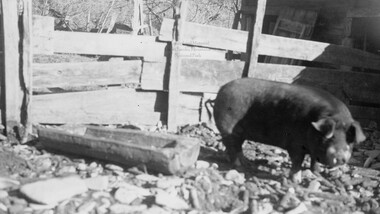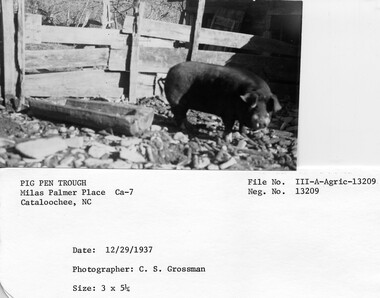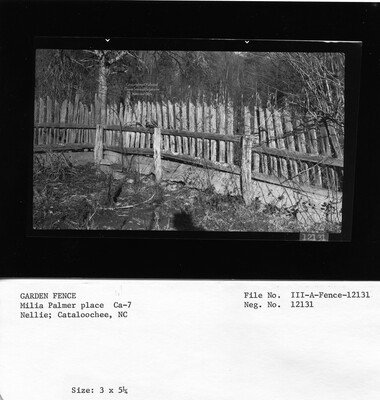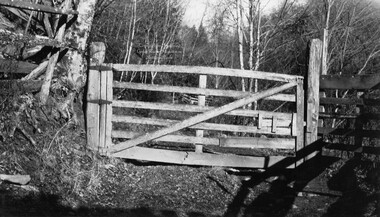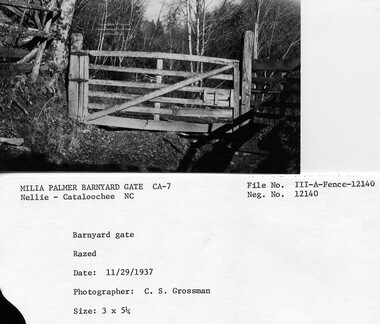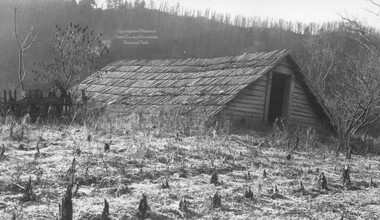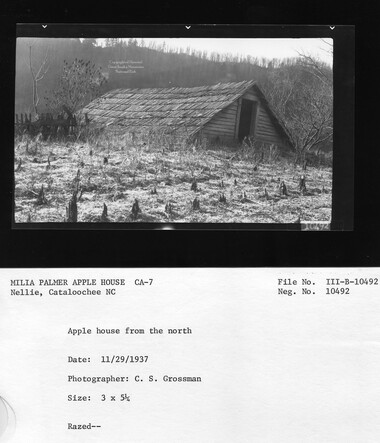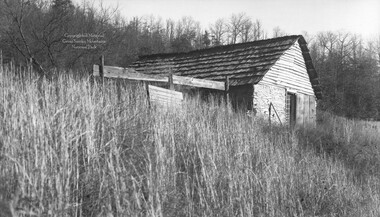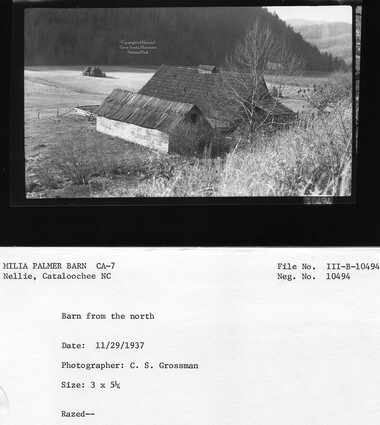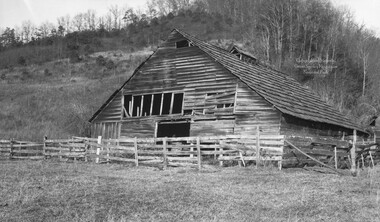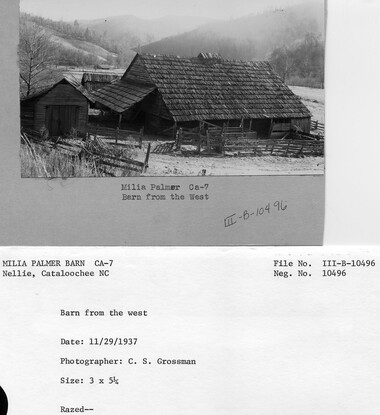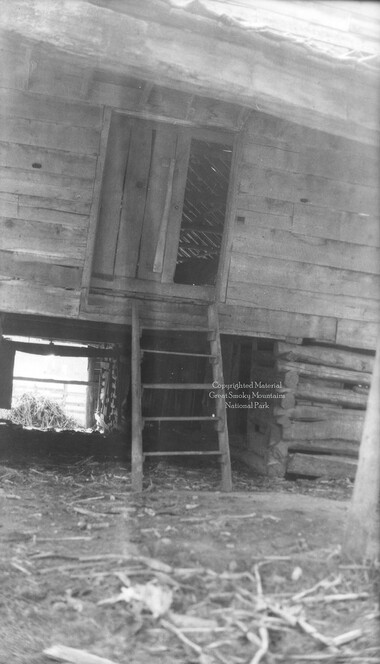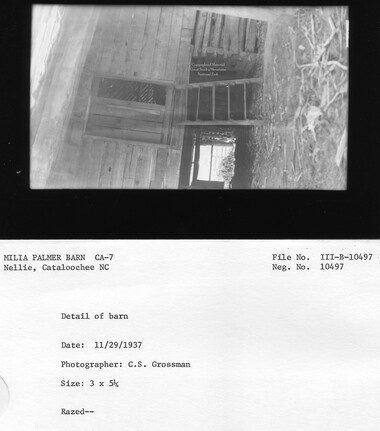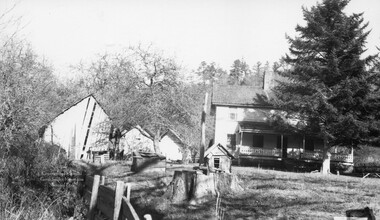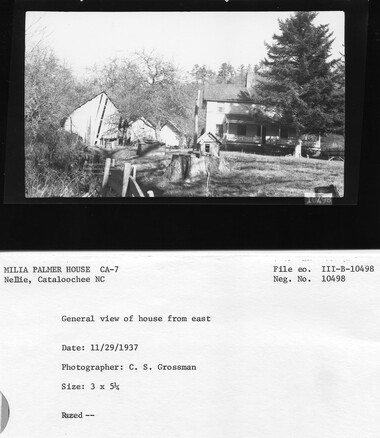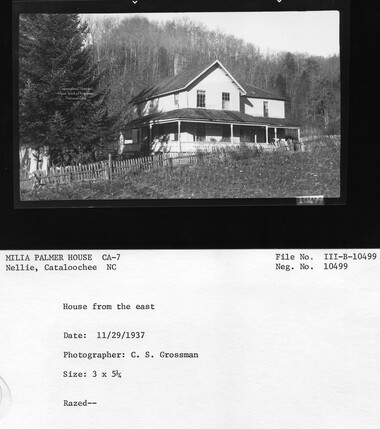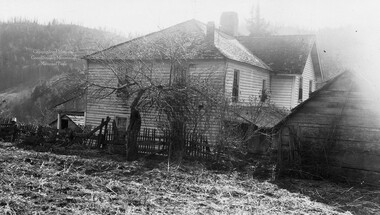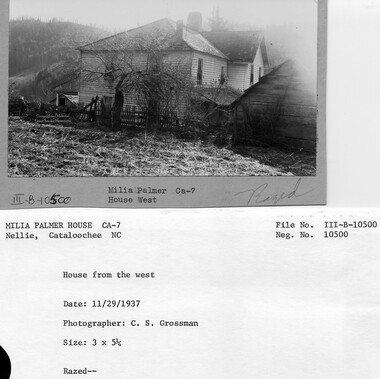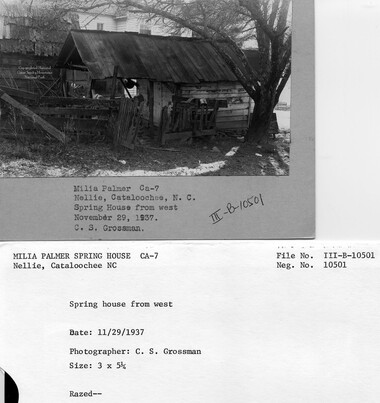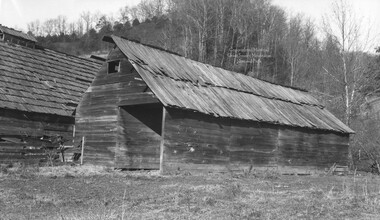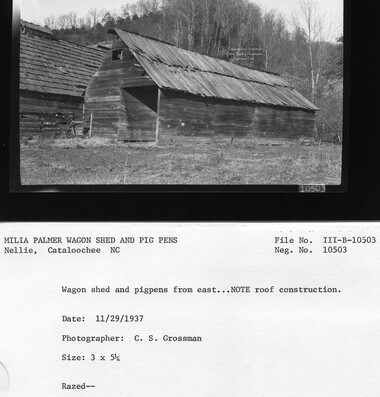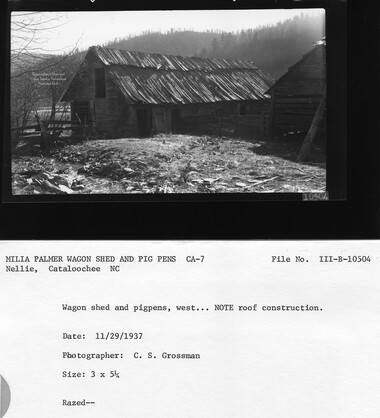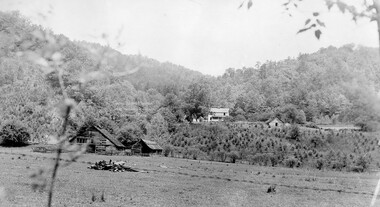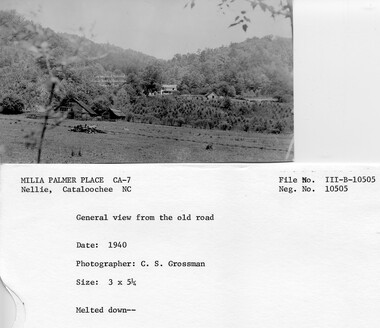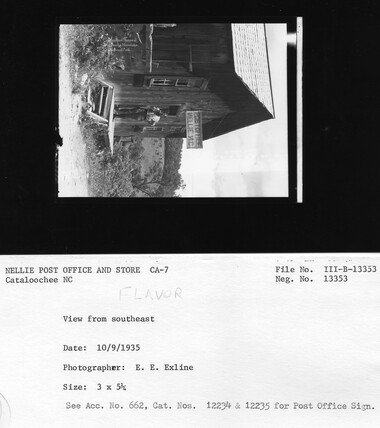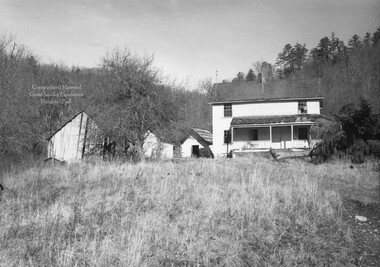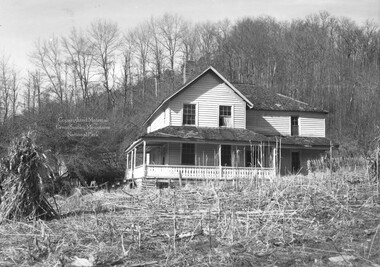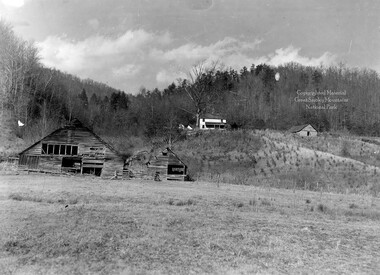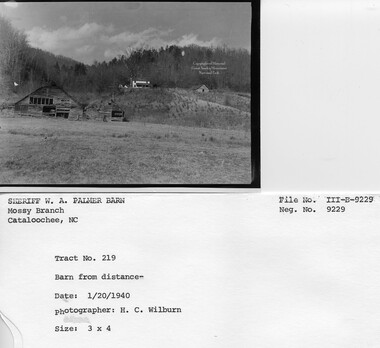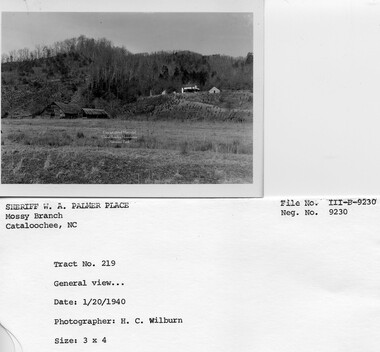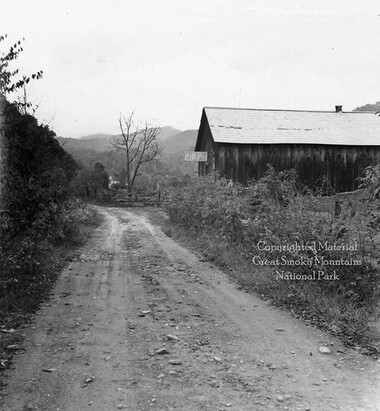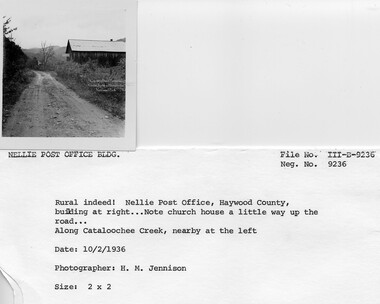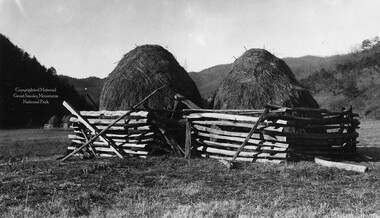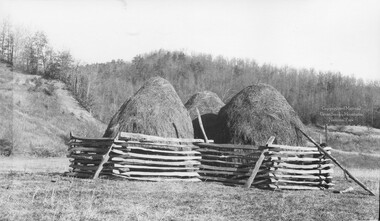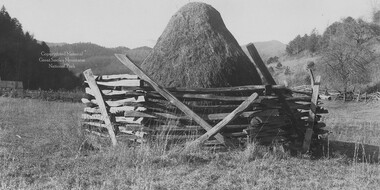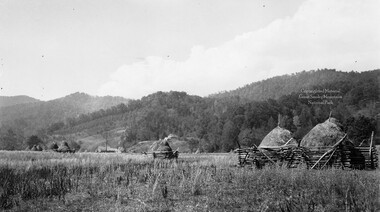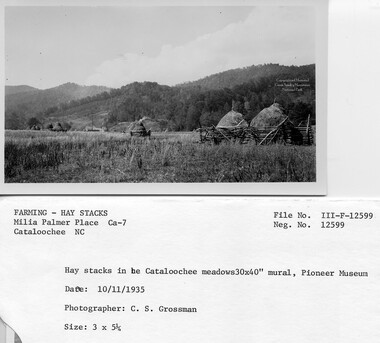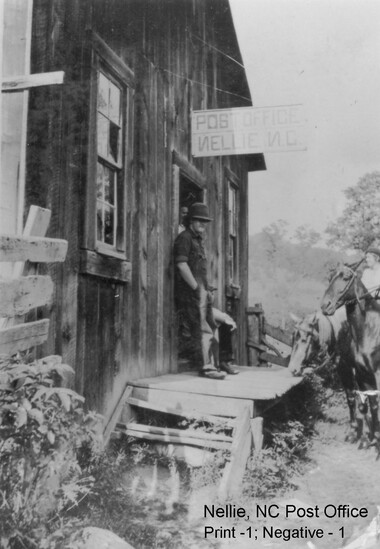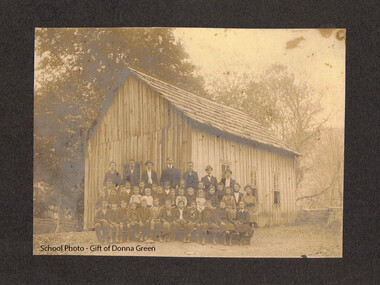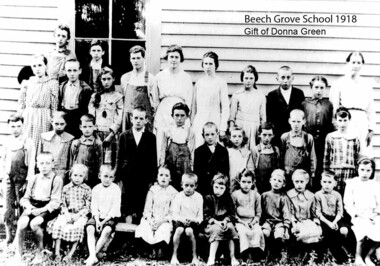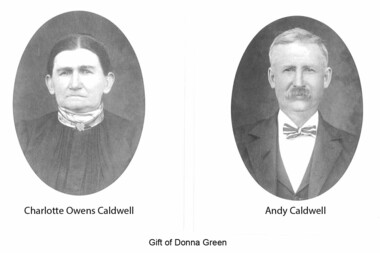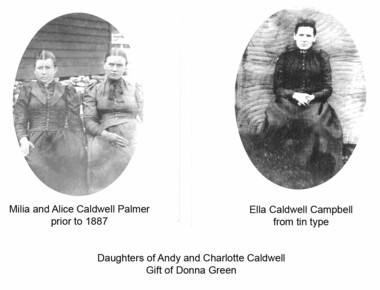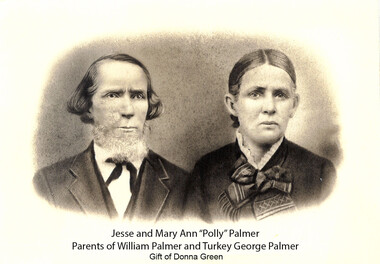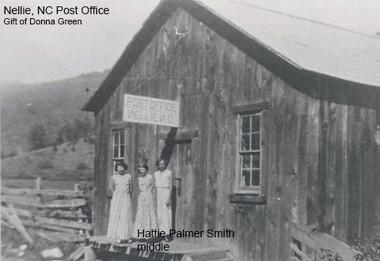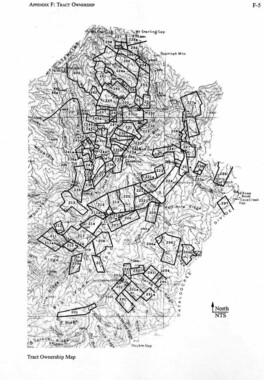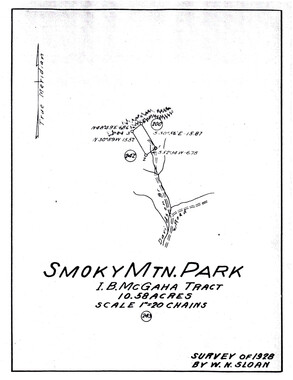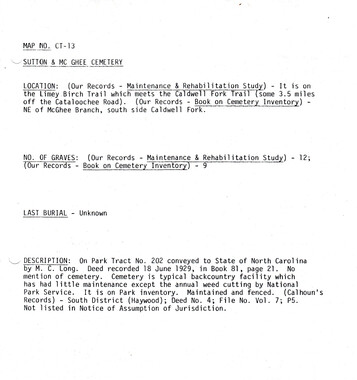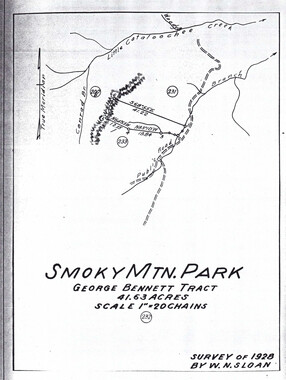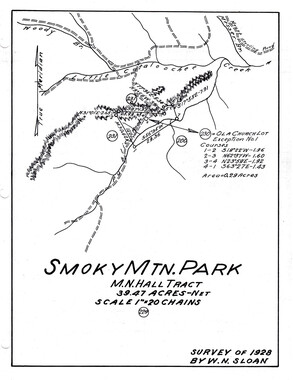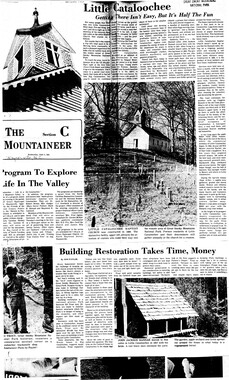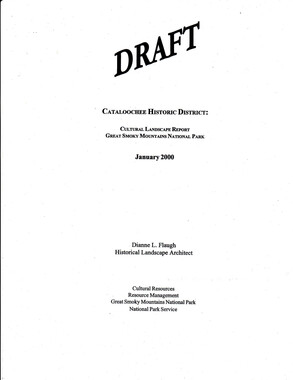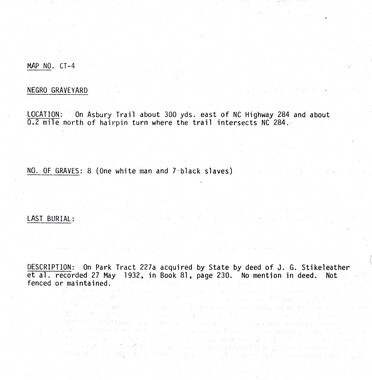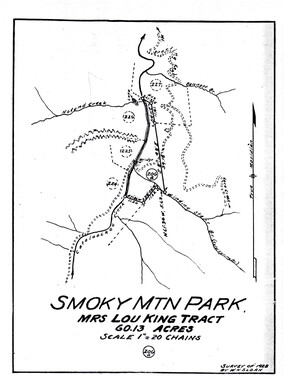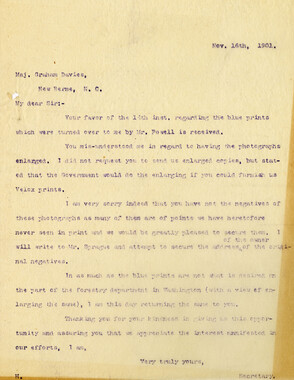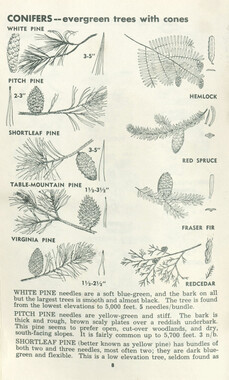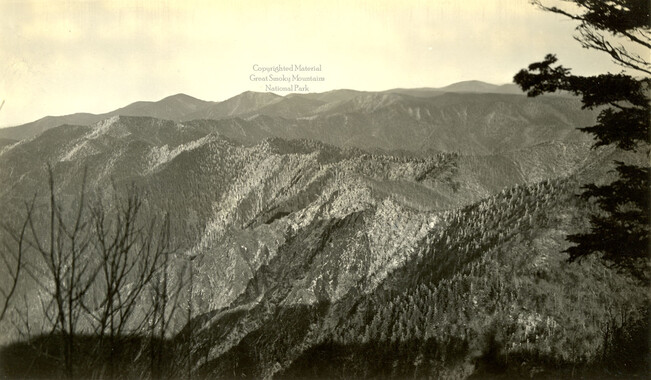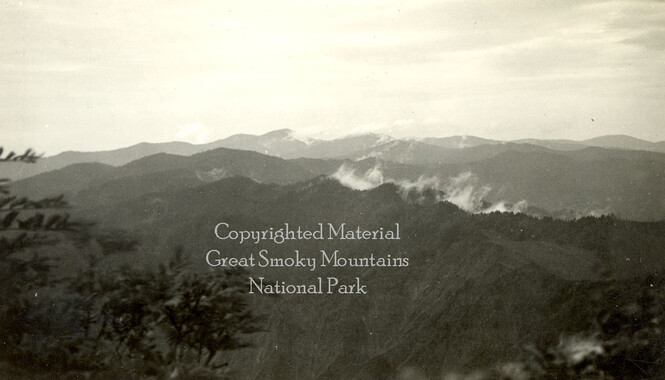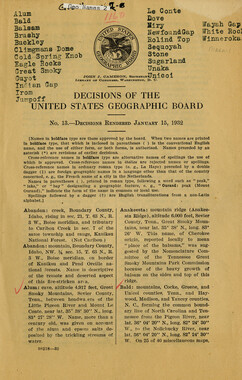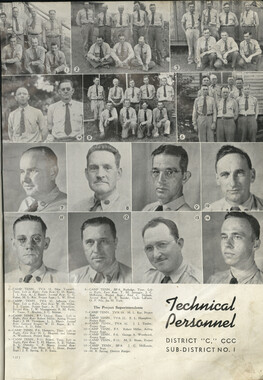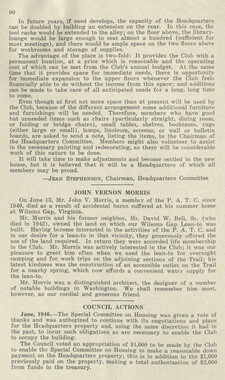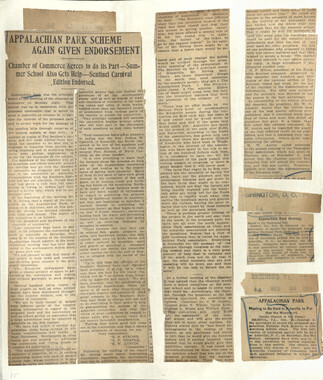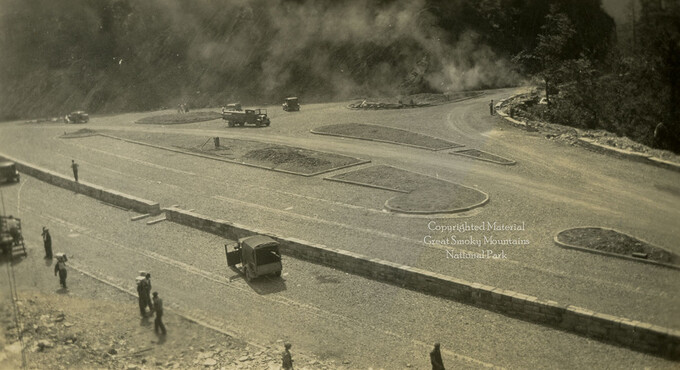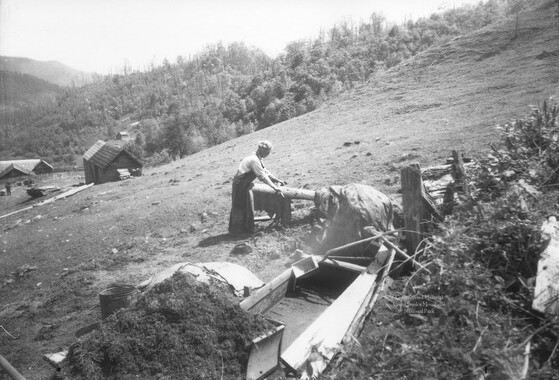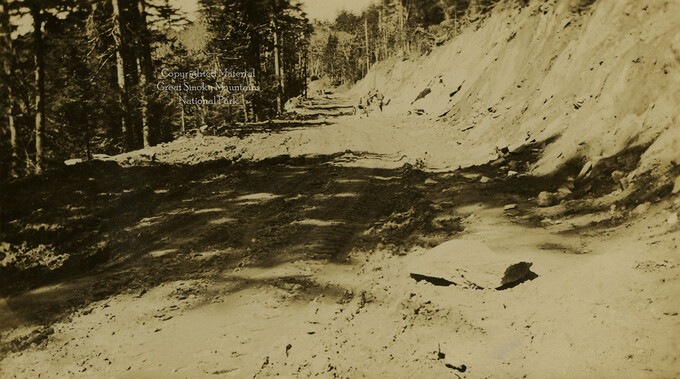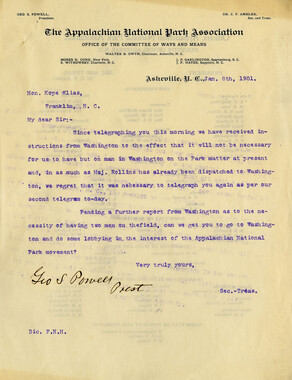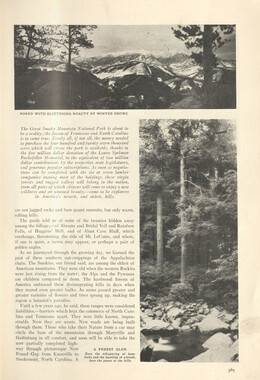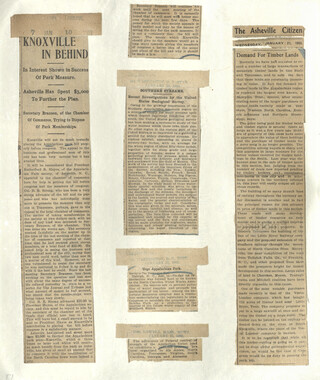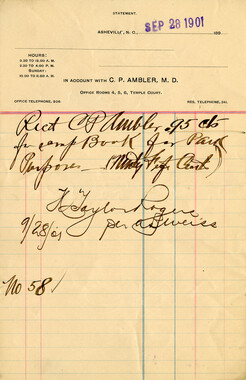Western Carolina University (20)
View all
- Canton Champion Fibre Company (2308)
- Cherokee Traditions (293)
- Civil War in Southern Appalachia (165)
- Craft Revival (1942)
- Great Smoky Mountains - A Park for America (2767)
- Highlights from Western Carolina University (430)
- Horace Kephart (941)
- Journeys Through Jackson (154)
- LGBTQIA+ Archive of Jackson County (24)
- Oral Histories of Western North Carolina (314)
- Picturing Appalachia (6772)
- Stories of Mountain Folk (413)
- Travel Western North Carolina (160)
- Western Carolina University Fine Art Museum Vitreograph Collection (129)
- Western Carolina University Herbarium (92)
- Western Carolina University: Making Memories (708)
- Western Carolina University Publications (2283)
- Western Carolina University Restricted Electronic Theses and Dissertations (146)
- Western North Carolina Regional Maps (71)
- World War II in Southern Appalachia (131)
University of North Carolina Asheville (6)
View all
- Allanstand Cottage Industries (62)
- Appalachian National Park Association (53)
- Bennett, Kelly, 1890-1974 (1388)
- Berry, Walter (76)
- Brasstown Carvers (40)
- Carver, George Washington, 1864?-1943 (26)
- Cathey, Joseph, 1803-1874 (1)
- Champion Fibre Company (233)
- Champion Paper and Fibre Company (297)
- Cherokee Indian Fair Association (16)
- Cherokee Language Program (22)
- Crowe, Amanda (40)
- Edmonston, Thomas Benton, 1842-1907 (7)
- Ensley, A. L. (Abraham Lincoln), 1865-1948 (275)
- Fromer, Irving Rhodes, 1913-1994 (70)
- George Butz (BFS 1907) (46)
- Goodrich, Frances Louisa (120)
- Grant, George Alexander, 1891-1964 (96)
- Heard, Marian Gladys (60)
- Kephart, Calvin, 1883-1969 (15)
- Kephart, Horace, 1862-1931 (313)
- Kephart, Laura, 1862-1954 (39)
- Laney, Gideon Thomas, 1889-1976 (439)
- Masa, George, 1881-1933 (61)
- McElhinney, William Julian, 1896-1953 (44)
- Niggli, Josephina, 1910-1983 (10)
- North Carolina Park Commission (105)
- Osborne, Kezia Stradley (9)
- Owens, Samuel Robert, 1918-1995 (11)
- Penland Weavers and Potters (36)
- Roberts, Vivienne (15)
- Roth, Albert, 1890-1974 (142)
- Schenck, Carl Alwin, 1868-1955 (1)
- Sherrill's Photography Studio (2565)
- Southern Highland Handicraft Guild (127)
- Southern Highlanders, Inc. (71)
- Stalcup, Jesse Bryson (46)
- Stearns, I. K. (213)
- Thompson, James Edward, 1880-1976 (226)
- United States. Indian Arts and Crafts Board (130)
- USFS (683)
- Vance, Zebulon Baird, 1830-1894 (1)
- Weaver, Zebulon, 1872-1948 (58)
- Western Carolina College (230)
- Western Carolina Teachers College (282)
- Western Carolina University (1794)
- Western Carolina University. Mountain Heritage Center (18)
- Whitman, Walt, 1819-1892 (10)
- Wilburn, Hiram Coleman, 1880-1967 (73)
- Williams, Isadora (3)
- Cain, Doreyl Ammons (0)
- Crittenden, Lorraine (0)
- Rhodes, Judy (0)
- Smith, Edward Clark (0)
- Appalachian Region, Southern (2393)
- Asheville (N.C.) (1887)
- Avery County (N.C.) (26)
- Blount County (Tenn.) (161)
- Buncombe County (N.C.) (1664)
- Cherokee County (N.C.) (283)
- Clay County (N.C.) (555)
- Graham County (N.C.) (233)
- Great Smoky Mountains National Park (N.C. and Tenn.) (478)
- Haywood County (N.C.) (3522)
- Henderson County (N.C.) (70)
- Jackson County (N.C.) (4692)
- Knox County (Tenn.) (25)
- Knoxville (Tenn.) (12)
- Lake Santeetlah (N.C.) (10)
- Macon County (N.C.) (420)
- Madison County (N.C.) (211)
- McDowell County (N.C.) (39)
- Mitchell County (N.C.) (132)
- Polk County (N.C.) (35)
- Qualla Boundary (981)
- Rutherford County (N.C.) (76)
- Swain County (N.C.) (2113)
- Transylvania County (N.C.) (247)
- Watauga County (N.C.) (12)
- Waynesville (N.C.) (68)
- Yancey County (N.C.) (72)
- Aerial Photographs (3)
- Aerial Views (60)
- Albums (books) (4)
- Articles (1)
- Artifacts (object Genre) (228)
- Biography (general Genre) (2)
- Cards (information Artifacts) (38)
- Clippings (information Artifacts) (191)
- Crafts (art Genres) (622)
- Depictions (visual Works) (21)
- Design Drawings (1)
- Drawings (visual Works) (184)
- Envelopes (73)
- Facsimiles (reproductions) (1)
- Fiction (general Genre) (4)
- Financial Records (12)
- Fliers (printed Matter) (67)
- Glass Plate Negatives (381)
- Guidebooks (2)
- Internegatives (10)
- Interviews (811)
- Land Surveys (102)
- Letters (correspondence) (1013)
- Manuscripts (documents) (619)
- Maps (documents) (159)
- Memorandums (25)
- Minutes (administrative Records) (59)
- Negatives (photographs) (5835)
- Newsletters (1285)
- Newspapers (2)
- Occupation Currency (1)
- Paintings (visual Works) (1)
- Pen And Ink Drawings (1)
- Periodicals (193)
- Personal Narratives (7)
- Photographs (12975)
- Plans (maps) (1)
- Poetry (6)
- Portraits (1663)
- Postcards (329)
- Programs (documents) (151)
- Publications (documents) (2237)
- Questionnaires (65)
- Scrapbooks (282)
- Sheet Music (1)
- Slides (photographs) (402)
- Sound Recordings (796)
- Specimens (92)
- Speeches (documents) (15)
- Tintypes (photographs) (8)
- Transcripts (322)
- Video Recordings (physical Artifacts) (23)
- Vitreographs (129)
- Text Messages (0)
- A.L. Ensley Collection (275)
- Appalachian Industrial School Records (7)
- Appalachian National Park Association Records (336)
- Axley-Meroney Collection (2)
- Bayard Wootten Photograph Collection (20)
- Bethel Rural Community Organization Collection (7)
- Blumer Collection (5)
- C.W. Slagle Collection (20)
- Canton Area Historical Museum (2110)
- Carlos C. Campbell Collection (282)
- Cataloochee History Project (65)
- Cherokee Studies Collection (4)
- Daisy Dame Photograph Album (5)
- Daniel Boone VI Collection (1)
- Doris Ulmann Photograph Collection (112)
- Elizabeth H. Lasley Collection (1)
- Elizabeth Woolworth Szold Fleharty Collection (4)
- Frank Fry Collection (95)
- George Masa Collection (173)
- Gideon Laney Collection (452)
- Hazel Scarborough Collection (2)
- Hiram C. Wilburn Papers (28)
- Historic Photographs Collection (236)
- Horace Kephart Collection (861)
- Humbard Collection (33)
- Hunter and Weaver Families Collection (1)
- I. D. Blumenthal Collection (4)
- Isadora Williams Collection (4)
- Jesse Bryson Stalcup Collection (47)
- Jim Thompson Collection (224)
- John B. Battle Collection (7)
- John C. Campbell Folk School Records (80)
- John Parris Collection (6)
- Judaculla Rock project (2)
- Kelly Bennett Collection (1407)
- Love Family Papers (11)
- Major Wiley Parris Civil War Letters (3)
- Map Collection (12)
- McFee-Misemer Civil War Letters (34)
- Mountain Heritage Center Collection (4)
- Norburn - Robertson - Thomson Families Collection (44)
- Pauline Hood Collection (7)
- Pre-Guild Collection (2)
- Qualla Arts and Crafts Mutual Collection (12)
- R.A. Romanes Collection (681)
- Rosser H. Taylor Collection (1)
- Samuel Robert Owens Collection (94)
- Sara Madison Collection (144)
- Sherrill Studio Photo Collection (2558)
- Smoky Mountains Hiking Club Collection (616)
- Stories of Mountain Folk - Radio Programs (374)
- The Reporter, Western Carolina University (510)
- Venoy and Elizabeth Reed Collection (16)
- WCU Gender and Sexuality Oral History Project (32)
- WCU Mountain Heritage Center Oral Histories (25)
- WCU Oral History Collection - Mountain People, Mountain Lives (71)
- WCU Students Newspapers Collection (1744)
- Western North Carolina Tomorrow Black Oral History Project (69)
- William Williams Stringfield Collection (2)
- Zebulon Weaver Collection (109)
- African Americans (390)
- Appalachian Trail (35)
- Artisans (521)
- Cherokee art (84)
- Cherokee artists -- North Carolina (10)
- Cherokee language (21)
- Cherokee pottery (101)
- Cherokee women (208)
- Church buildings (167)
- Civilian Conservation Corps (U.S.) (110)
- College student newspapers and periodicals (1830)
- Dams (103)
- Dance (1023)
- Education (222)
- Floods (61)
- Folk music (1015)
- Forced removal, 1813-1903 (2)
- Forest conservation (220)
- Forests and forestry (917)
- Gender nonconformity (4)
- Great Smoky Mountains National Park (N.C. and Tenn.) (154)
- Hunting (38)
- Landscape photography (10)
- Logging (103)
- Maps (84)
- Mines and mineral resources (8)
- North Carolina -- Maps (18)
- Paper industry (38)
- Postcards (255)
- Pottery (135)
- Railroad trains (71)
- Rural electrification -- North Carolina, Western (3)
- School integration -- Southern States (2)
- Segregation -- North Carolina, Western (5)
- Slavery (5)
- Sports (452)
- Storytelling (245)
- Waterfalls -- Great Smoky Mountains (N.C. and Tenn.) (66)
- Weaving -- Appalachian Region, Southern (280)
- Wood-carving -- Appalachian Region, Southern (328)
- World War, 1939-1945 (173)
Cataloochee tract 219: Milia Palmer
Item
Item’s are ‘child’ level descriptions to ‘parent’ objects, (e.g. one page of a whole book).
-
-
CATALOOCHEE HISTORIC DISTRICT: CULTURAL LANDSCAPE REPORT GREAT SMOKY MOUNTAINS NATIONAL PARK January 2000 Dianne L. Flaugh Historical Landscape Architect Cultural Resources Resource Management Great Smoky Mountains National Park National Park Service CHAPTER 4: [NDIYIDUAL TRACTS 121 Milia Palmer Tract (219) Palmer Methodist Church Cemetery lies on this tract. Landscape infonnation for the cemetery is included in Palmer Methodist Church tract 218. T~/t_ract is also known as the home of Sheriff William Palmer. X Location Tract 219 is a 145.66-acre parcel located north ofCataloochee Creek and bisected by Mossy Branch. History Originally this tract was part of a four hundred-acre parcel bonded to John H. Mull in 1863. Mull, a carpenter, was contracted by the Loves to build a mill in Big Cataloochee and this land is said to have been payment for that work. Tax records for 1867, and 1868, include Mull as the owner of four hundred acres but he does not appear on the 1870 census. In 1875, Love executors deeded the four hundred acres to Jesse Palmer. In 1881, Jesse Palmer transferred this portion ofthe four hundred-acre tract to his son William A. Palmer. The NCPC purchased the property in 1930, from Mrs. W. A. Palmer for $9,700. Little is known of the early use of this parcel by John Mull and Jesse Palmer. It is likely that portions of this property, especially the level bottomland, were cleared and fanned during their ownership. William Palmer was well known in Cataloochee and Haywood County. He was first elected High SheriffofHaywood County in 1910/11, and served in that post for many years. Inside Cataloochee, Palmer was involved in a variety of ventures. He operated a store and the Nellie Post Office from a small building that stood on this tract along the settler road. His wife, Milia Caldwell Palmer, served as postmistress. Livestock auctions were held monthly at the Palmer barns.1 Cattle scales were located at the barns and were used by the community. Palmer also owned a steam-powered sawmill, which he set up near by the store (ca. 1920). This mill operated on a small scale cutting lumber from logs harvested from this tract as well as a custom mill for the community.2 He is also said to have provided accommodations for fishennen in his house. Family members say that he was not in the business of providing accommodations but that the same people returned to stay in their home. Palmer's agricultural activities included raising livestoc~ having approximately: five horses, two mules, six hogs, thirty sheep, two milk cows, and fifty cattle. Some of these animals were pastured on tenant fanns in Cataloochee.3 Vegetation NCPC records indicate that parcel 219 consisted of thirty-five acres of bottom land, thirteen acres of pasture, and ninety-nine acres ofwoodland. Details about the types of crops grown by Palmer, the number of acres devoted to differing crops, and the arrange- · ment of fields on the land are unknown. . ~~ ·. 'f . . , ' ,'' 122 . CULTIJRAL LANDSCAPE REPORT: CATALOOCHEE HisTORIC DISTRICT An orchard of apples, plums, peaches, and pears stood north of the house and between the house and Mossy Branch. This orchard was not planted on a grid pattern but randomly arranged. The Palmers also had some fruit trees at the base of the slope.4 Survey drawings (ca. 1935) ofthe valley also show that one apple tree stood not far from the NelliePost Office. In the fields and along the main road through Cataloochee stood a number of walnut trees that William Palmer refused to cut down. Gudger Palmer recalls his father saying that a woman, who had done him a good turn when he was young, had planted them. These trees may be associated with the site of the James Caldwell cabin.5 The Palmers had a large yard that they kept neatly cut with a scythe. They also planted their house yard to white clover and bluegrass. The lawn included a chestnut and an oak tree. Photographs (ca. 1937) show a large evergreen tree in front ofthe house. Ornamentals included roses, snowball bush, vines on the porch, rose of Sharon, forsythia, spirea, dahlias, daffodils, and yucca. In addition to vegetables the garden included grapes, gooseberries, and rhubarb.6 Circulation The old settler road ran along Cataloochee Creek and skirted a rocky wooded area in front of the Nellie Post Office. A trace branched off this just north of the Nellie Post Office and lead to the farm complex. A trail extended through the homesite to cross Mossy Branch and eventually corul.ected with Cooks Lane.7 Cooks Lane, the route used to transport mail between Big and Little Cataloochee, ran through the western edge of this tract. During the 1940s the CCC built a new road through the meadows ofCataloochee that replaced the main road through this portion ofCataloochee. This road cut through the bottom land fields of this tract and ran between Nellie Post Office and the Palmer barns. Structures, Furnishings, and Objects NCPC records indicate that the property included a 20' by 40' box storehouse, two garages, eight room frame house (ca. 1880), light plant house, smokehouse, springhouse, rock apple house, 50' by 65' barn and cattle barn. No specific dates of construction are available for the any of the structures and no building survey notes have been found. The house stood on a flat bench ofland above the main valley floor (figure 44). Several smaller outbuildings stood along side the house. Photographs (ca. 1937 and 1940) depict the large frame house as two stories high with a two story ell extending off the rear of the house. A porch with decorative railings wrapped around the south and east side ofthe house and ell. Another small porch was found on the west side of the ell. Lattice work and fieldstones enclosed the base of the porch. The house had a central brick chimney, a second chimney at the northwest comer of the ell, and lightening rods. The house and surrounding outbuildings all appear to have been painted. "------' CHAPTER 4: INDIVIDUAL TRACTS 123 Figure 44. Fields in Big Cataloochee, 1935. Note Milia Palmer house on bench above valley floor. GRSM Archives. The trace road to the house also extended along the edge of the land bench to the applehouse. The applehouse had a stone foundation and was built into the side of the slope. The garden stood between the applehouse and the house. The garden was surrounded by palen fence. Barns and farm outbuildings stood in the main valley floor along side Mossy Branch. The larger bam was roofed with wood shingles and topped with a rectangular cupola. The remaining barns had board roofs. William Palmer built a large stone structure on Mossy Branch above the house that functioned as a culvert. This structure allowed the Palmers to access land above this point for timber harvesting. 8 William Palmer owned a steam-powered sawmill that he used to saw poplar boards for fencing. Photographs (ca. 193 7 and 1940) show board fences and gates around the barns and house. The family used residue from the gas light system to paint the plank fence around the house. The residue went on gray but turned white.9 Views and Vistas With their homesite located on a bench above the valley floor, the Palmers were afforded excellent views across Big Cataloochee Valley. Photographs (ca. 193 7) show views that extend some distance both up and down the valley (figures 45). An obvious landmark seen from the Palmer homesite was the Methodist Church. Existing Conditions The Milia Palmer tract is included in the area designated for historic landscape management. Through periodic mowing, the thirty-five acres ofbottomland on this tract have largely been maintained as open meadow. Forest has begun to encroach on the edge of :t,~ . :~ ' c • .I 124 CULTIJRAL LANDSCAPE REPORT: CATALQOCHEE HisTORIC DISTRICT Figure 45. View from Milia Palmer homesite, 1937. Note Palmer Methodist Church in distance. GRSM Archives. this open meadow, especially in areas where fallen trees prevent mowing up to the meadow edge. The formerly clear slope between the house site and the barns has thickly reforested. The formerly clear area surrounding the house site (yard and garden) can still be discerned and is dominated by tulip poplar. Other areas, once used for agricultural fields, are now dominated by tulip poplar in the overstory with hemlock and dogwood in the understory. Io The orchard has also overgrown, but number of volunteer apple trees (and dead fruit tree trunks) remain in this area as well as along the base ofthe slope. In the fields and along the old trace road six of the walnut trees remain. They have grown in size since the 1935 Survey recorded their size and location. The large oak, chestnut, and evergreen trees found in the Palmer house yard are Some ornamentals persist on the site including roses, Rose of Sharon, forsythia, spirea, daffodils, and yucca. I 1 Traffic travels a paved section of Cataloochee Creek Road through this tract. There are no NPS maintained trails on this tract. The trace of the old settler road remains visible on this tract. It follows along side C~taloochee Creek and skirts a wooded area. Horseback riders use portions of the trace road through this tract. Other portions of the trace are wet and others blocked by fallen trees. Through the wooded area, horseback riders have created multiple paths. The road trace which led through the fields to the Palmer house is more apparent during winter months. Its route upslope to the house site can be followed but is LHV'-'""'"'~ by fallen trees. From the house site, traces can be tracked that extend east to the CHAPTER 4: INDIVIDUAL TRACTS 125 applehouse and north up Mossy Branch to beyond the homesite. Cooks Lane, in the immediate vicinity of Palmer Chapel Cemetery, is visible but soon becomes impossible to track. No buildings remain on this site. Most were probably removed in the early 1940s. The house was sold at auction in December 1941 . Of the buildings, only foundation remnants, chimney piles, and scattered bricks remain. The most obvious structural remnant is the stone foundation of the apple house (figure 46). The spring branch used by the Palmer family still flows through the homesite area. Depressions mark the location of the cattle barns and livestock scales. Figure 46. Milia Palmer apple house stone foundation, 1999. Throughout the former house yard and garden area are remnant wood fence posts. Remnants of wood post and wire fencing also run along the trace road on this tract. The stone culvert remains in place approximately nine hundred feet north of the homesite, It still functions to allow an easy crossing of Mossy Branch. Views from the Palmer homesite have been totally obscured by forest growth. Analysis and Evaluation This site is associated with Sheriff William and Milia Palmer. As the location of a store, post office, sawmill, and livestock scale this site was important in the community life of Cataloochee. This site has been greatly impacted by reforestation and the loss of structure~. However, the lower field areas remain open meadow and greatly contribute to the overall agricultural character of Big Cataloochee Valley. Buildings may be missing, but within the homesite area historic circulation patterns and use areas of are evident. Remnant features, including ornamental plants, persist on the tract and attest to the work of former residents. ··· ·; 126 CULlURAL LANDSCAPE REPORT: CATALOOCHEE HisTORIC DISTRICT NOTES I Will Sutton and Mrs. Cole Sutton, Interview by author, Written notes, Maggie Valley, NC, 10 August 1998. 2 Gudger Palmer, Interview by author, Written notes oftelephone cOnversation, 10 June 1998. 3 Gudger Palmer, Interview by Jacqueline Lott and author, Written notes, Cataloochee, NC, 27 March 1998. 4 Ibid. 5 H. C. Wilburn, Interview notes, H. C. Wilburn Papers, Special Collections, Hunter Library, Western North Carolina University, Cullowhee, NC, 160. Wilburn's notes indicate Jim Caldwell settled at the walnut trees below the Milia Palmer place. 6 Gudger Palmer, Interview by author, Written notes of telephone conversation, 7 April 1998. Gudger Palmer recollects that roses on this property were not climbing roses and had small clusters of flowers. The snowball bush was an old time plant that many others in the valley had and was not a hydrangea. The vine growing on the porch leafed out each year and developed small brownish balls the size of marbles and looked like potatoes. His mother planted dahlia on the right side of the house toward the garden. 7 Gudger Palmer, Interview by author, Written notes of telephone conversation, 7 May 1998. I Jbid. 9 Gudger Palmer, 27 March 1998. 10 "A Vegetation Survey of Cultural Management Zones in the Cataloochee Area of the Great Smoky Mountains National Park," Great Smoky Mountains National Park, Resource Mapagemerit, 6 May 1997, 42. 11 All observed on site in 1998. \ \_ '\ \ WilbumSke t c h Plan -Mili a Palmer Tract 219 (NTS) H-9
Object
Object’s are ‘parent’ level descriptions to ‘children’ items, (e.g. a book with pages).
-
This 145.5-acre tract 219 in Cataloochee was owned by Milia Palmer. Palmer Methodist Church Cemetery lies on this tract. Milia Palmer was the wife of Sheriff William A. Palmer. While, in general, the Great Smoky Mountains region was sparsely populated, the Cataloochee Valley remained an exception. By 1900, the population of Cataloochee had grown to 1,000 residents living in hundreds of log and frame homes. A few historic buildings have been preserved on site, including two churches, a school, several homes, and outbuildings. The North Carolina Park Commission was tasked with purchasing land for the Great Smoky Mountains National Park and people living in Cataloochee were among those displaced. Cataloochee families continue to return for annual reunions. In 2001, the National Park Service re-introduced elk into the valley.
-
